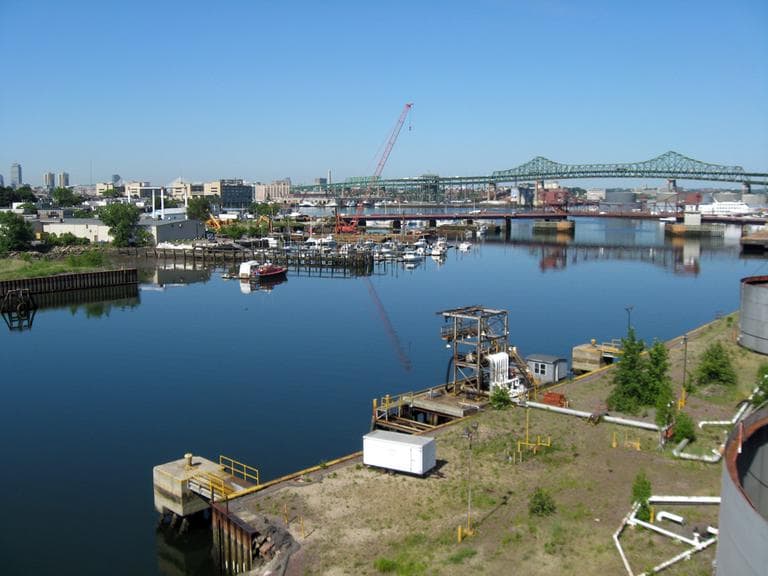Advertisement
Balancing Industry And Recreation On Boston's Waterfront
Resume
When one thinks of the city of Chelsea, waterfront views are hardly the first thing that comes to mind. While the city looks out at the Tobin Bridge and Boston skyline, the views are largely obscured by hulking fuel tanks, warehouses and, of course, those huge hills of salt.
Architect Daniel Adams wants to make those salt piles a gateway — not a barrier — to the waterfront. As part of its expansion, the Eastern Minerals Company, which is the main supplier of road salt in the region, is working with Adams to incorporate green space and public amenities into the complex.
For Adams, the project grows out his belief that the public is losing precious infrastructure when industry — in particular transportation — is expelled from the waterfront, often to make way for condos and hotels and the like.
However, neighborhood residents who live near the Boston area's many urban waterfronts — the ones who have to deal with the noise, smell and traffic — often take a dimmer view of keeping industry around. We examine the competing interests of aesthetics, recreation and commerce on Boston's waterfronts.
What's the best way to develop Boston's waterfront? How do you balance the need for public access and seaside strolls, with the needs of a working harbor?
Guests:
- Daniel Adams, architect and partner at the Landing Studio in Somerville, who is designing a public park as part of an expansion of the Eastern Minerals Company on Chelsea's waterfront.
- Vivien Li, president of the Boston Harbor Association
- Roseann Bongiovanni, director of the Chelsea Green Space and Recreational Committee.
This program aired on June 22, 2011.